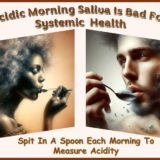Telehealth Reverse Diabetes to Restore, Improve and Enhance Mental Health | Free Trial In Texas

Persistently high levels of insulin damage mental as well as physical function.
Every year, one in five people in the US looks for help to fix some mental, behavioral or emotional disorder. About the same number as need help with their diabetes.
They’re not all the same people but there’s tremendous overlap. People with any mental complaints are more than twice as likely to have diabetes as everybody else. Also, people with diabetes are more likely than everybody else to suffer from abnormal mental function.
To learn more about Herd Healthcare Programs, our website is:
www.herdhealthcare.com
Severe Mental Illness And Brain Insulin Resistance
Serious mental illnesses affecting about 5% of the population interfere with more major life activities.
Schizophrenia affects about 1% of the population. It deranges how a person thinks, feels, and behaves. Those affected have hallucinations, delusions, thought disorders and agitated body movements. They also have reduced expression of emotions and reduced feelings of pleasure in everyday life.
Patients with schizophrenia have increased insulin resistance and family studies suggest polygenic links with type 2 diabetes.
No studies of brain insulin resistance have been reported but persistent high levels of insulin likely disturb cellular metabolism in brain tissue.
Bipolar disorder affects about 2% of the population. Also known as manic-depressive disorder, it causes unusual shifts in mood, energy, activity levels, and the ability to carry out day-to-day tasks.
More than half of patients with bipolar disorder have increased insulin resistance. Brain insulin resistance in these patients has not been reported. However, patients with bipolar disorder have reductions in the volume of the region that regulates emotion. They also have reductions in volumes of the cerebral cortex concerned with long term memory.
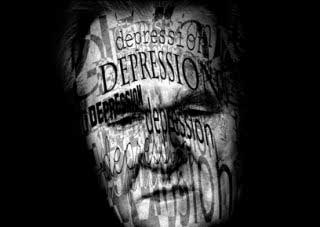 Severe Depression also affects about 2% of the population. It is diagnosed when symptoms last for at least two weeks. Those affected have severe disruption in how they feel, think, and handle daily activities, such as sleeping, eating, or working.
Severe Depression also affects about 2% of the population. It is diagnosed when symptoms last for at least two weeks. Those affected have severe disruption in how they feel, think, and handle daily activities, such as sleeping, eating, or working.
Nerve cells in the brain’s reward system of patients with severe depression fail to respond to insulin activity. Also, volumes of regions in the brain concerned with motivational function are reduced in patients with severe depression.
Dementia is highly age-related occurring in 1% of all adults in the U.S. but occurring in 14% of those over 70 years of age. Dementia is the decline in memory and cognitive skills that reduce ability to perform everyday activities. Alzheimer’s disease causes 60 to 80% of all cases.
Brain insulin resistance in Alzheimer’s disease decreases cell function and disrupts signaling pathways at all concentrations of insulin in the brain.
Exercise Training and Severe Mental Illness
New guidelines from the American and European Psychiatric Associations promote exercise in treatment for depression and schizophrenia. They specify aerobic exercise for a total of 150 minutes per week with resistance exercise for 30 minutes 2 or 3 times a week.
These are essentially the Guidelines promoted by the American College of Sports Medicine for everybody. What is the evidence related specifically to Severe Mental Illness?
Schizophrenia causes cycles of symptoms that require medication to keep dysfunction under control. Resistance Strength Training by itself and combined with Endurance Aerobic Training reduces symptoms still further. This has been demonstrated by Investigators at the Federal University of Rio de Janeiro.
These investigators reported a study of 34 adults with schizophrenia who did exercise training for 60 minutes twice a week for 20 weeks. One group used weights in a gym, a second group combined strength training with endurance aerobic exercise and a control group did not exercise at all. Before, during and after the study, all subjects completed a Positive and Negative Syndrome Scale questionnaire.
 As shown in the Figure, the first group that did just strength training showed the greatest improvement in the first 10 weeks. The improvement was maintained for the entire 20 weeks. The second group that combined strength training with aerobic exercise did almost as well. The group that did not exercise had no improvement.
As shown in the Figure, the first group that did just strength training showed the greatest improvement in the first 10 weeks. The improvement was maintained for the entire 20 weeks. The second group that combined strength training with aerobic exercise did almost as well. The group that did not exercise had no improvement.
The investigators did not report how long the improvements lasted. However, 120 minutes of exercise per week improved symptoms of schizophrenia within 10 weeks.
Depression was improved by Aerobic Exercise plus education and psychotherapy. Those studies followed guidelines promoted by the American College of Sports Medicine for everybody. Endurance aerobic exercise training lasted at least 12 weeks and included moderate exercise for at least 150 minutes per week.
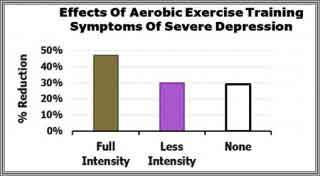 Primary outcomes were judged according to scores on the 17-item Hamilton Rating Scale for Depression. As shown in the Figure, studies of subjects doing exercise under protocols reaching less than those guidelines failed to improve beyond results obtained using education and psychotherapy only.
Primary outcomes were judged according to scores on the 17-item Hamilton Rating Scale for Depression. As shown in the Figure, studies of subjects doing exercise under protocols reaching less than those guidelines failed to improve beyond results obtained using education and psychotherapy only.
Subjects who exercised a total of 150 minutes each week reduced their Depression scores 47% from baseline. Those who performed less exercise reduced their scores by 30%. This lesser amount was about the same as recorded for those subjects who received education and psychotherapy without exercise.
Depression also was improved by Resistance Strength Training. Results have been reported from 33 randomized clinical trials involving 1,877 patients  with mild to moderate depression. Effect of each study was judged according to reduction of symptoms from baseline measures. Several studies provided more than one outcome. A total of 54 effect outcomes were analyzed.
with mild to moderate depression. Effect of each study was judged according to reduction of symptoms from baseline measures. Several studies provided more than one outcome. A total of 54 effect outcomes were analyzed.
As shown in the Figure, 42 effect outcomes showed favorable results. Depressive symptoms were reduced on average more than 50%.
Dementia caused by Alzheimer’s Disease and Parkinson’s Disease is prevented, delayed or improved by exercise. Prospective studies show that high levels of physical activity reduce the risk of dementia.
 Studies in patients with Alzheimer’s Disease show that exercise improves cognitive function, decreases psychiatric symptoms and maintains Activities of Daily Living.
Studies in patients with Alzheimer’s Disease show that exercise improves cognitive function, decreases psychiatric symptoms and maintains Activities of Daily Living.
Studies in adults with mild cognitive impairment have shown significant improvements with strength training and aerobic exercise. Those with the highest strength scores had the most improvement in cognitive function. The greatest improvements occurred with increased lower body strength.
Anxiety, Mood And Affect
Anxiety disorders occur in about 30% of people sometime during their lifetime. They include panic disorders, PTSD, obsessive-compulsive disorders, social anxiety disorders and specific phobias. Exact causes are not known for these disorders, but substantial relief comes with aerobic exercise and resistance strength training.
Anxiety commonly is associated with depression. Relief from depression relieves symptoms of anxiety. Both aerobic exercise and strength training are effective.
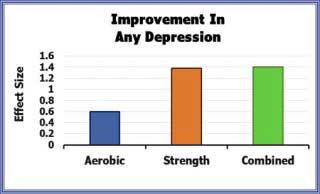 The Figure shows the improvements in depression and anxiety reported with exercise training. Several studies report results of separate exercise protocols and a few report results of combined aerobic exercise and strength training. In general, strength training has proved to be more effective than aerobic exercise. However, the combination of aerobic exercise with strength training has shown even greater improvement.
The Figure shows the improvements in depression and anxiety reported with exercise training. Several studies report results of separate exercise protocols and a few report results of combined aerobic exercise and strength training. In general, strength training has proved to be more effective than aerobic exercise. However, the combination of aerobic exercise with strength training has shown even greater improvement.
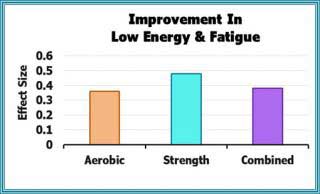 Symptoms of low energy and fatigue also occur frequently with anxiety. Here, again, exercise training brings improvement in symptoms. The improvements are not as striking as relief from depression but occur consistently. The Figure shows improvements from strength training are slightly greater than results from aerobic exercise. The combination of aerobic exercise and strength training did not show additional benefits.
Symptoms of low energy and fatigue also occur frequently with anxiety. Here, again, exercise training brings improvement in symptoms. The improvements are not as striking as relief from depression but occur consistently. The Figure shows improvements from strength training are slightly greater than results from aerobic exercise. The combination of aerobic exercise and strength training did not show additional benefits.
Posttraumatic stress disorder (PTSD) affects between 1.3% and 8.8% of people everywhere. Symptoms include nightmares, flashbacks, avoidance behaviors, anxiety and poor sleep. Several systematic reviews have found beneficial effect of aerobic, resistance or combined resistance and aerobic exercise on PTSD symptoms, and co-occurring anxiety.
These improvements have been shown in healthy populations and those with mental illness.
Mechanisms for Improvement are unknown. The relative benefits of endurance aerobic exercise and resistance strength training for improving mental function appear related to insulin resistance. There are different effects on body composition.
The relationship of muscle mass and fat mass with insulin resistance and metabolic syndrome suggests a strategy for improving mental function. Studies in an Asian population have sorted out some of the uncertainties related to body composition.
Results have been reported from a cross-sectional study with 14,807 adult participants aged between 18 and 65 years of age. Muscle mass and fat mass 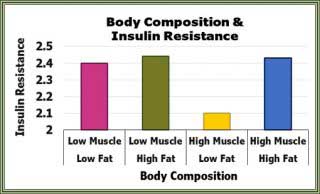 were determined using Dual Energy X-ray Absorptiometry (DEXA) data. Using these data subjects were divided into four categories (low muscle/low fat, low muscle/high fat, high muscle/ low fat, and high muscle/high fat).
were determined using Dual Energy X-ray Absorptiometry (DEXA) data. Using these data subjects were divided into four categories (low muscle/low fat, low muscle/high fat, high muscle/ low fat, and high muscle/high fat).
The Figure shows that the group with high muscle/low fat was associated with significantly lower insulin resistance than any other group. Apparently high fat mass opposes the effects of high skeletal muscle mass.
Aerobic Exercise and Strength Training have different effects. Aerobic exercise improves insulin sensitivity of skeletal muscle while resistance strength training increases the glycogen storage capacity. As a result, aerobic exercise increases insulin sensitivity more quickly while resistance strength training clears more fat and sugar from the blood.
The ideal combination is to build more skeletal muscle mass using resistance strength training while increasing rate of clearance using aerobic exercise.
Summary
Exercise training brings improved function for any mental, behavioral or emotional disorder. It also enhances mood, affect and cognitive function.
Endurance Aerobic Exercise increases insulin sensitivity of existing skeletal muscle while Resistance Strength Training increases the amount of sugar and fat that skeletal muscle can clear from the blood.
 We are pleased to share our blog articles with you, and we are always interested to hear from our readers. Our website address is: www.herdhealthcare.com
We are pleased to share our blog articles with you, and we are always interested to hear from our readers. Our website address is: www.herdhealthcare.com



